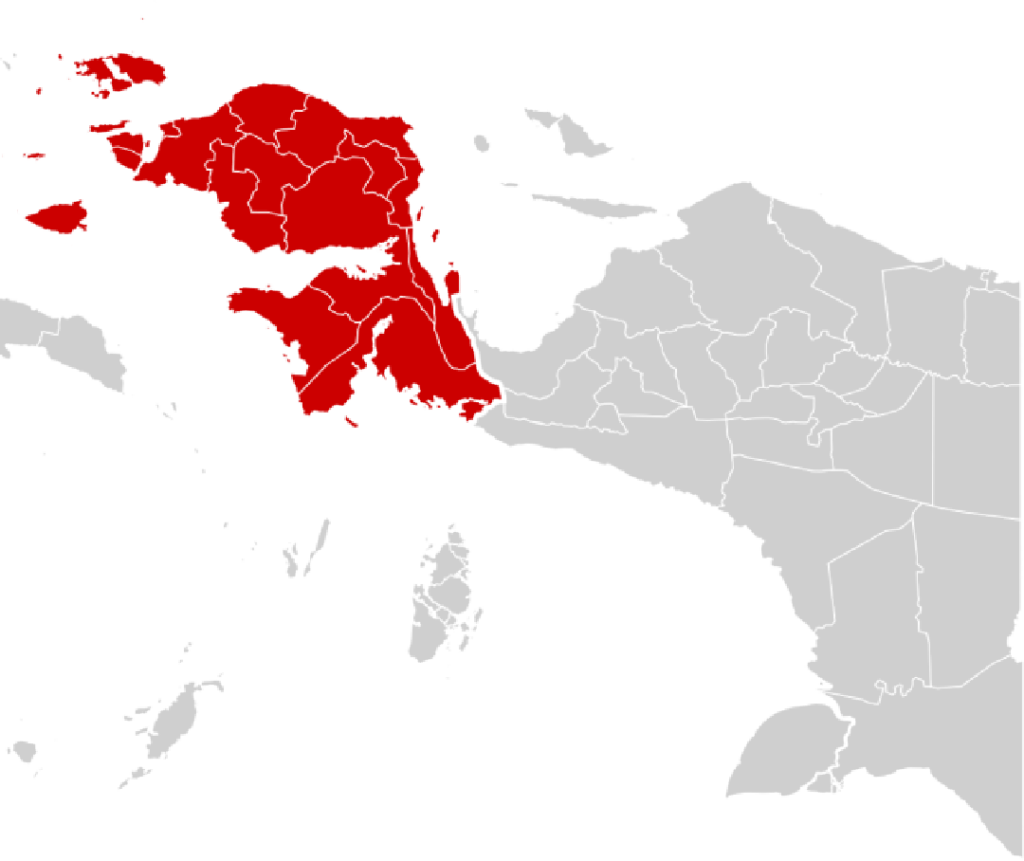The Asmat tribe lives in Asmat Regency, Papua Province. This tribe is very famous for its amazing carvings or sculptures. Behind the aesthetics of the statues, it seems that there is a mythology that guides the life of the Asmat people.
One of the most famous types of statues belonging to the Asmat tribe is called the Mbis, which looks like a pile of overlapping statues carved open on an overturned tree trunk. The tree has a height between 4-12 meters. The name Mbis was given by the Asmat people to the statues of their ancestors, made to commemorate the death of family members because they were beheaded by enemies, especially people who were influential in their lives.
The mythology of the Asmat carving art has a long story. In short, the Asmat people believe that Fumiripits—their ancestor, has passed down the Asmat tribe through the Mbis statue, so that the descendants of this tribe are believed to be sculptors. Therefore, for the Asmat people, carving plus weaving, singing and dancing have become a major part of their lives. Asmat people who do not have these skills, it means they are dead.
The Role of the River for the Asmat Tribe as the Path of the Spirit To Eternity
According to the beliefs of the Asmat people, the world is divided into three: Asamat Ow Capinmi, where humans live; Damir Ow Capinmi, the resting place of those who have died and have not entered into eternal rest in heaven; and Safan, the final eternal resting place (heaven).
The majority of Asmat people want to enter Safan when they are gone because it is considered the place where the spirits of their ancestors (ancestors) live, full of happiness and no suffering. To successfully enter Safan, the Asmat people must do a lot of good in their lives, including respecting the spirits of their ancestors and obeying all the customary rules of the Asmat tribe.
The Asmat people believe that when heroes, traditional elders, shamans and warlords die, their spirits can immediately enter Safan. However, if someone dies of disease, is killed, or is exposed to black magic, he or she will stay in Damir Ow Capinmi and cannot enter Safan. It is this spirit that does not reach Safan that is considered to bring disease, suffering, disaster, or even war to the Asmat people who are still alive.
To be able to avoid all these evils, the Asmat people who are still alive must atone for these spirits by holding parties and making carvings. By including their names on carvings or statues, the spirits are expected to enter Safan.
Spirit Worshipper
The Asmat people really care about the relationship between humans and fellow human beings, God, nature, and the spiritual world. In order to gain refuge in the world or enter Safan, they must perform magical rituals or worship of the ancestors.
Worship can be given through carving human figures on wood, doing headhunting (killing someone to take their head), revenge, singing, or dancing. From there too, the famous Asmat tribe has a lot of rituals.
Close to Nature
The Asmat people live by utilizing natural resources sufficiently—such as sago, fish, shrimp, forest animals, without destroying or changing them. They only took what was needed for that day’s use, then the next day they would look for it again. The sago tree for the Asmat people symbolizes a mother figure because she always fulfills their food needs.
Their close relationship with nature helps the Asmat people recognize a variety of plants and animals, so they can mix medicine, then strengthen it with ms. The potion is often used in the practice of white and black magic.


